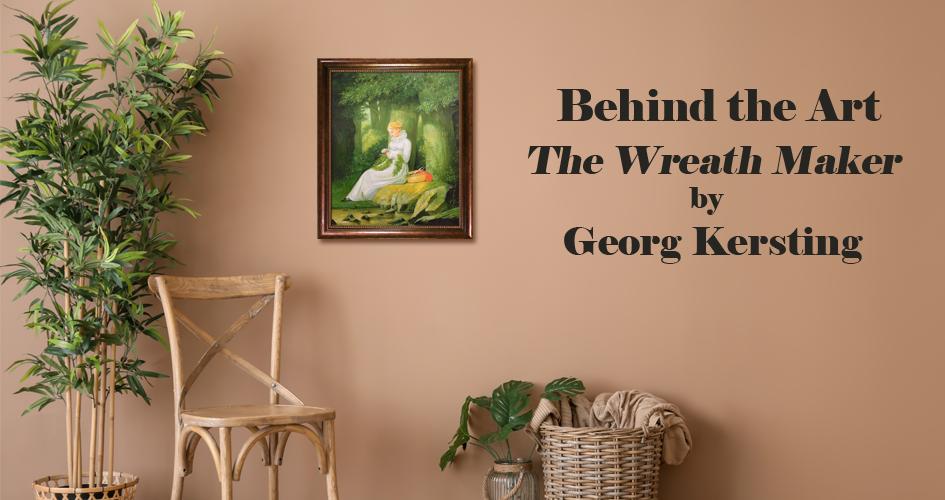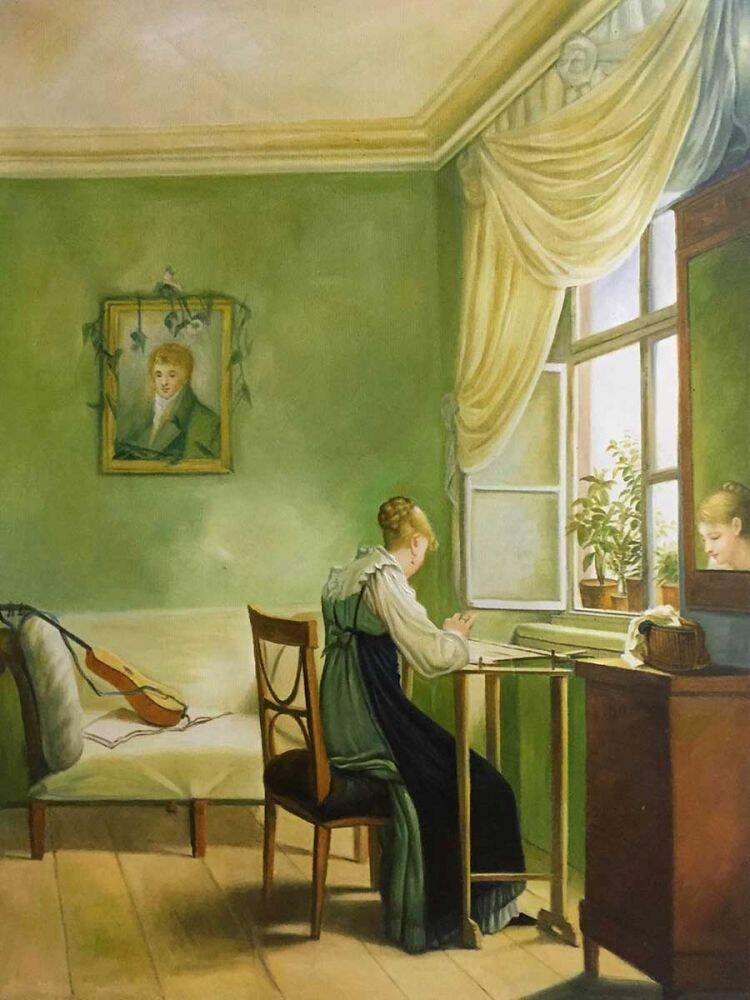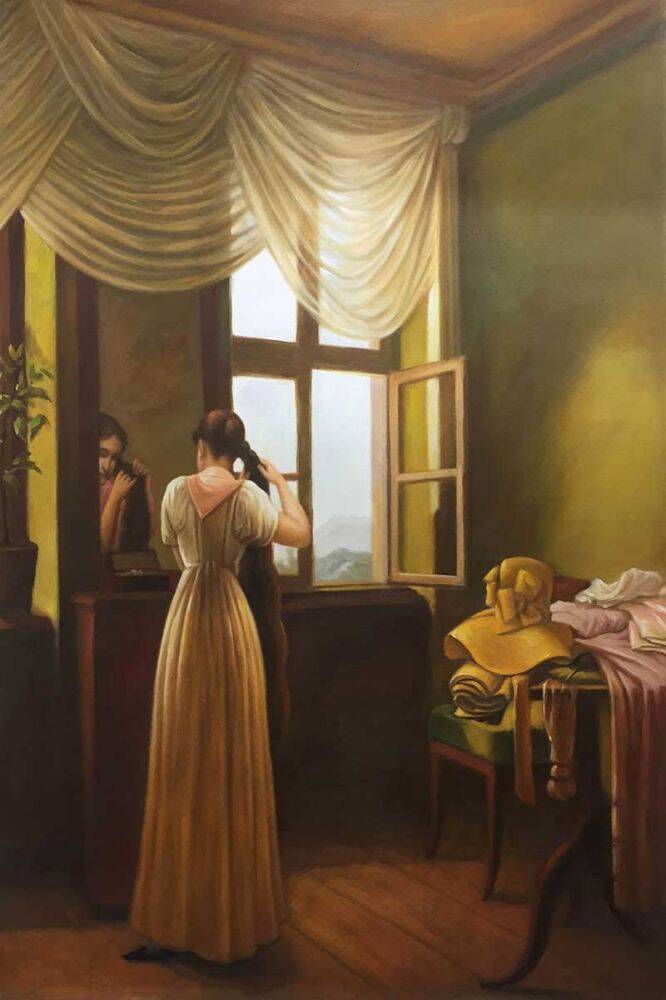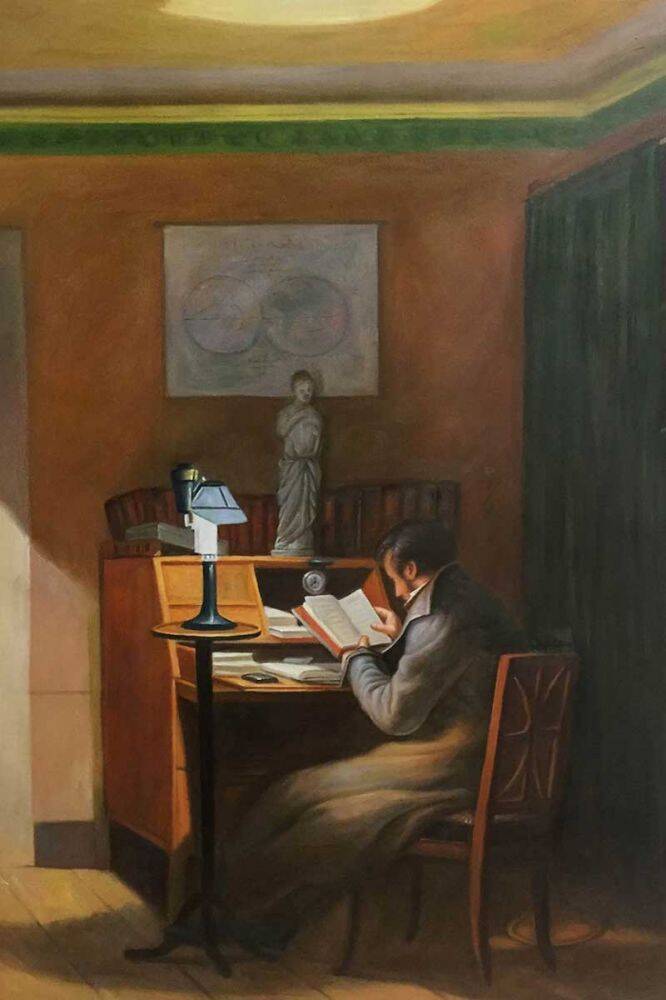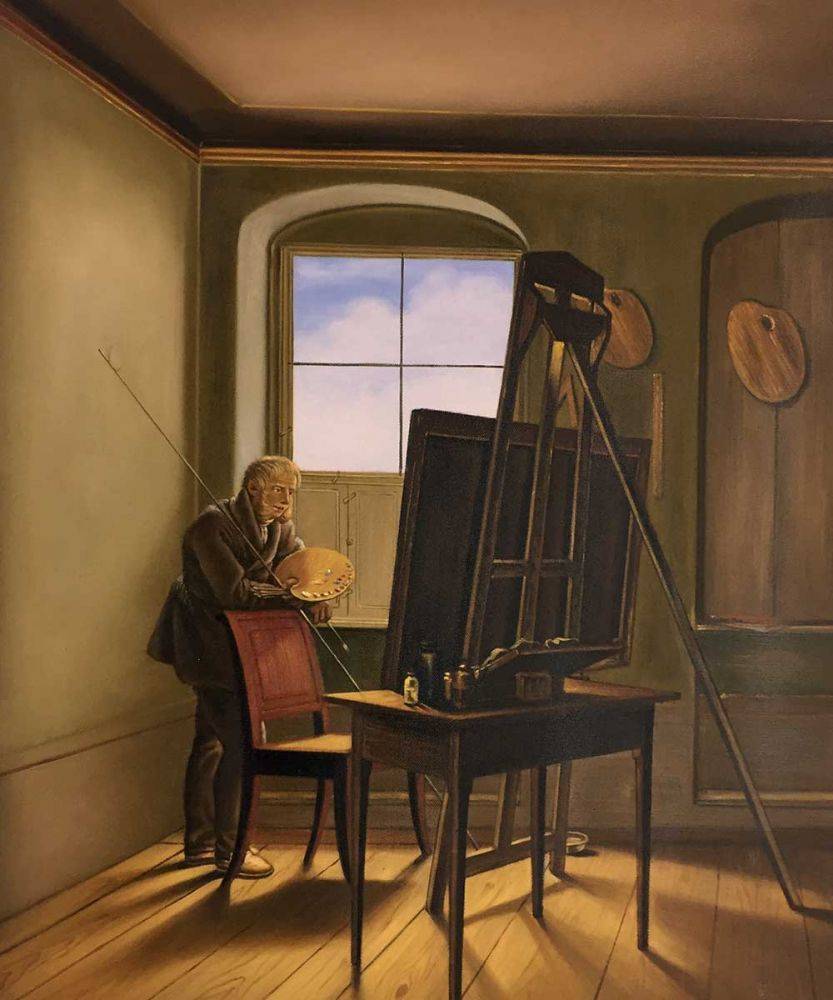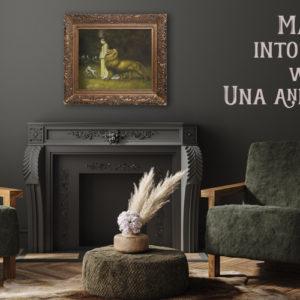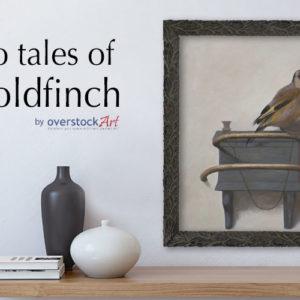Art History
Art Reflections
Reproduce THIS: Know Your Art
The Wreath Maker by Georg Friedrich Kersting
With the arrival of spring, animals emerge from winter, and the world turns green again. Spring brings new life to the fallen friends of german romanticist Georg Friedrick Kersting in The Wreath Maker. Born into a supportive family in Güstrow, he quickly made his way into the arts, earning a silver medal in draughtsmanship. He found his interest in Dutch styles while studying at the Copenhagen Academy in 1805-1808. He moved to Dresden in 1808 and lived there until 1814. It was during this time he created, The Wreath Maker.
Kersting is known for his Biedermeier interior paintings with a clear influence from dutch genre paintings of the Golden Age. This style earned its name from the Biedermeier writers who, as a result of strict censorship, painted only non-political subjects, like historical fiction and country life. Likewise, artists focused on everyday life, which we can see in Kersting’s Embroidery Woman and Before the Mirror. Hints of narrative, figures engaged in private activities. Kersting followed and admired Casper David Friedrick’s work and is from whom he learned the style. The two became fast friends and even went on a walking tour of the Riesengebirge. During these hikes, they would paint and sketch from nature.
Historical Background
Kersting painted two artworks for his friends; The Wreath Maker is considered a diptych with On Outpost Duty. The men served in the Lutzower free corps during the War of Liberation of 1813. It was the last Napoleonic campaign in Germany, bringing Napoleon his final defeat at the battle of Leipzig. His friends were Theodor Körner who was a writer, Karl Friedrick Friesen, and Heinrich Hartman a fellow artist. Kersting joins the corps in 1813, following an appeal by Körner who was a recruiter. This regiment was a symbol of german-nationalism; therefore, Kersting could not decline his friend’s offer. As a sniper or “hunter” Kersting fought behind the enemy lines. In his short time in the corps, he led a charge on enemy posts and was awarded the Iron Cross. Kersting would see all three of his friends perish on the battlefield. Körner was only twenty-one.
Analysis
The Wreath Maker can be read as the artist’s patriotic avowal and at the same time reveals Kersting’s grief over the loss of his friends. A woman sits in a forest, weaving a wreath from oak branches. At her feet is a stream. Most importantly, there are names cut into the oak trees behind the girl reading Hartmann, Körner, and Friesen. There is a solemn yet peaceful silence about the forest. The woman in white has the aura of a bride. The trees rise from the ground like gravestones. The oak tree is a symbol of Germany, being the national tree and standing for strength, heroism, and endurance. Kersting gave the scene an interior-like, intimate atmosphere. The forest is like a temple, where a mourner weaves wreaths of glory for the fallen heroes.
This artwork currently resides at the Alte Nationalgalerie, Staatliche Museun in Berlin. At overstockArt.com, you can find beautiful reproductions of Kersting’s works along with many other famous masterpieces.
